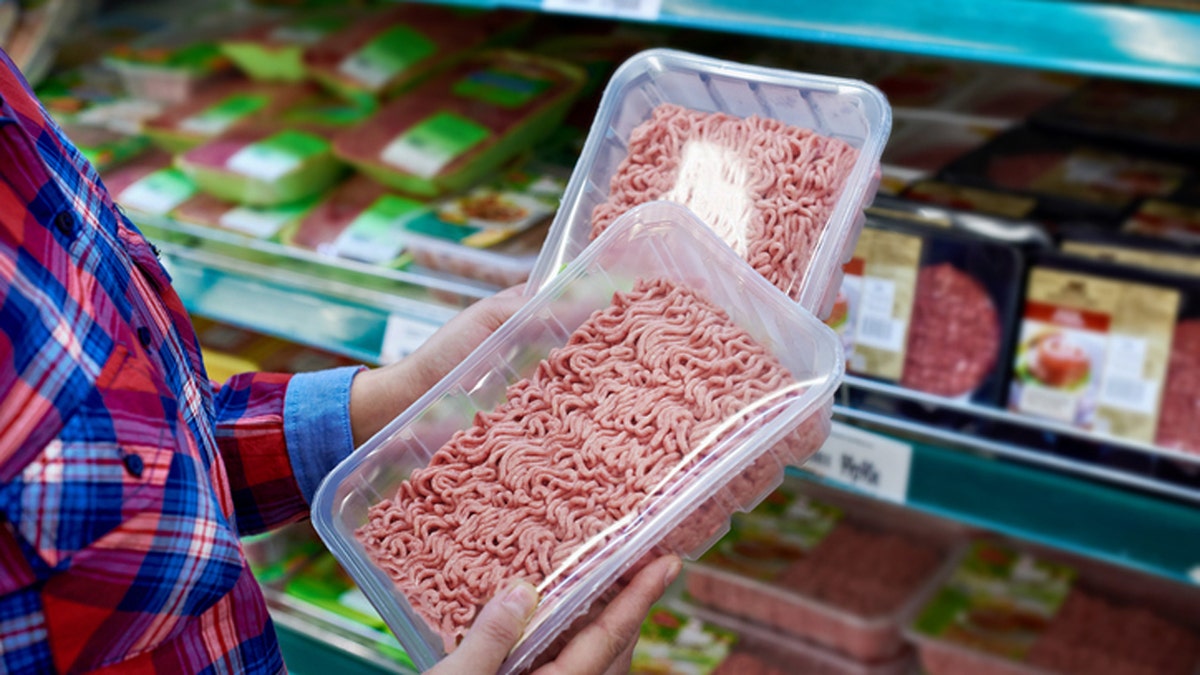
Buyer chooses minced meat in a store (iStock)
There's nothing difficult about buying ground beef. Go to the grocery store, pick up a package labeled "ground beef," end of story.
But let's say you're not in the mood for mystery meat that's been ground up who knows when or where—which is often what's in that conveniently portioned package. Say you want ground beef from one cow, not 100. It's just as easy to find, and you don't have to leave the grocery store.
The beef with ground beef
"Contamination is a problem in the beef supply in general," says Urvashi Rangan, chief scientific adviser at Grace Communications Foundation in New York City.
In her previous research as executive director of Consumer Reports' Food Safety and Sustainability Center, Rangan found a higher risk for foodborne pathogens such as salmonella and E.coli in conventional beef than in grass-fed, sustainably raised beef.
Ground beef in particular is problematic because, says Rangan, "It's when you cut into it and begin processing that you start introducing contamination or cross-contamination." If bacteria is already present somewhere in the meat, it'll spread once it's ground up.
Other factors that don't exactly ease one's anxiety about potentially tainted beef, according to this 2015 report by Consumer Reports: there are usually two or more stages in the grinding process, and the end product is typically a mixture of trimmings from many cows, possibly from other countries.
Buy whole, then grind
Which brings us to the best low-effort way to buy single-source ground beef: Get a steak and have it ground for you on the spot. (A chuck steak is ideal if you're making burgers, but whatever it is you're cooking, make sure there's some fat to it.)
Many grocery stores will do the grinding for you if you ask, so don't be shy about asking. And if there isn't someone behind the meat counter, ask for a department or store manager.
Rangan suggests going one further by looking for the organic and/or grass-fed label, indicating that what you're buying is sustainably raised beef, free of antibiotics or growth hormones.
Grass-fed beef in particular tends to not only be "cleaner" but more nutritious, says Rangan. "Grass-fed beef has more omega 3s and 6s, much better fatty acid profiles, than conventional. It's a better profile all around," she says.
For the DIY-er
You can get geekier by taking that steak home and grinding it yourself if you know how to work the grinder attachment on your stand mixer.
If you want to forego the supermarket altogether but stay within the single-source beef realm, you've got options. Buy from a local farmer or join a CSA; many farms offer meat-only shares.
There's even a Seattle startup called Crowd Cow that sells shares of whole cows from small, sustainable ranchers. When all the shares in a cow have been bought, it's slaughtered and the cuts you've specified online are shipped. It's a guaranteed way get ground beef from one, and only one, cow.
Remember, though, that bacteria can spread regardless of how or where you buy your meat, so once you've got your hands on ground beef you feel good about it, cook it thoroughly.
